Now that we’ve looked at global comparisons and heard how poorly Australia is tracking, what’s going on around our nation? And particularly, what’s happening inside our own houses of democracy?
Even the use of that word ‘democracy’ is contestable. In truth, there can be no claim to democracy without gender parity.
There can be no claim to democracy without gender parity.
Across Australia, women are disproportionately represented in all three tiers of government. Federally, we seem forever stuck below 30%. Currently, 28.6% of House of Representative seats held by women.
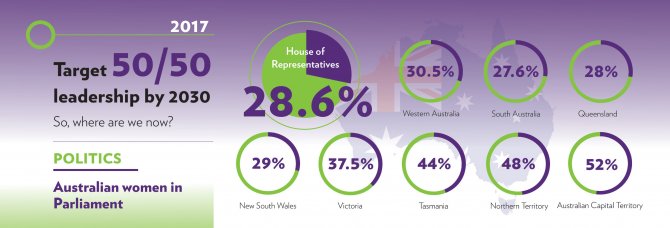 Some, no doubt, probably think that’s not too bad. After all, despite Australia granting women the vote and the right to be elected way back in 1902, it took 41 years before the nation saw a woman in the House of Representatives – or the Senate.
Some, no doubt, probably think that’s not too bad. After all, despite Australia granting women the vote and the right to be elected way back in 1902, it took 41 years before the nation saw a woman in the House of Representatives – or the Senate.
At State level, in lower houses, 30% representation of women is a common theme. Big states including NSW, Queensland, South Australia and Western Australia hover between 23 to 29%. Victoria has busted through with 38% and Tasmania is doing well with 44% female representation.
In lower houses, 30% representation of women is a common theme.
But it’s the tiny Territory parliaments that are setting the example, with the NT a healthy 48%. However the only Legislature that can truly call itself representative is the ACT’s Assembly, with 13 women – a proud 52%.
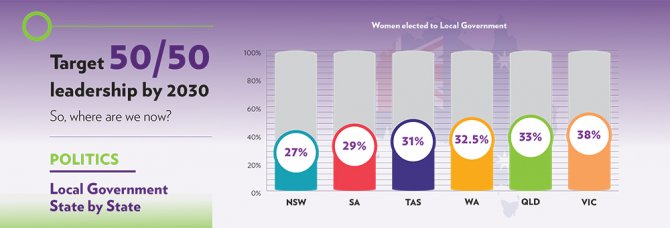 Local Government is the worst tier of government when it comes to the representation of women in leadership. Across Australia 30% of elected councillors are women, and just 11% of Council CEO or Chief Executive roles held by women.
Local Government is the worst tier of government when it comes to the representation of women in leadership. Across Australia 30% of elected councillors are women, and just 11% of Council CEO or Chief Executive roles held by women.
The only Legislature that can truly call itself representative is the ACT’s Assembly, with 13 women – a proud 52%.
Amusingly, in every workshop the Foundation has run for Local Government leaders, when we ask why the Executive leadership has so few women, we’re inevitably told one of the reasons is because Local Government is about ‘rates, roads and rubbish’. Well given women pay rates, use roads and create rubbish in precisely the same manner as men do, why not put them in charge?
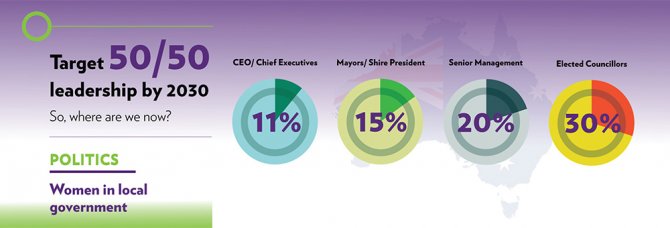 When it comes to University Leadership the Australia-wide picture is not good. More than half the Vice Chancellors in South Australia and Western Australia are women – but none of the Chancellors.
When it comes to University Leadership the Australia-wide picture is not good. More than half the Vice Chancellors in South Australia and Western Australia are women – but none of the Chancellors.
Victoria, Queensland, NSW have between 20% and 30% women Vice Chancellors. Tasmania, ACT and the Northern Territory have none, nor women Chancellors either.
Across Australia around one third of the Heads of School or Faculties are women, and 1/4 of E Level Professors are women.
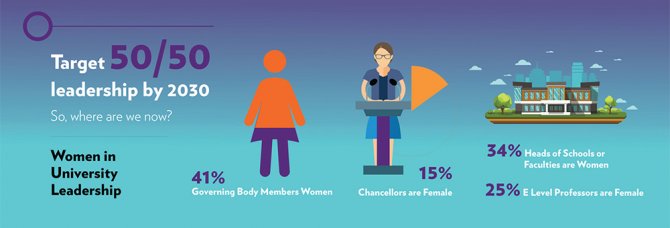 So is there anywhere in public leadership where women are making significant progress?
So is there anywhere in public leadership where women are making significant progress?
Well yes… and no.
The Australian Public Sector has worked hard at improving the representation of women in leadership, in an ad hoc way over the past two decades, and in a more targeted and strategic way over the past five years. Consequently, women now make up just over 40% of the Senior Executive Service, with the majority in the lowest band.
However, as IGPA’s 2013 watershed report, ‘Not Yet 50/50: Barriers to the Progress of Senior Women in the APS‘ found, there are still some enormous cultural and organisational mountains to be scaled before women in the APS no longer feel they have to remodel themselves and their careers to fit a system shaped by masculine design.
But here’s the clanger: Gender Equality is not about the numbers!
Here’s the clanger: Gender Equality is not about the numbers!
As the Director of a gender equality initiative called 50/50 by 2030, it might seem counter intuitive to say that. The numbers give us a measure, targets – and ultimately, a goal.
But the numbers are not the main game here. The numbers are just the headline. It’s the story below the headline that should serve as our driving force.
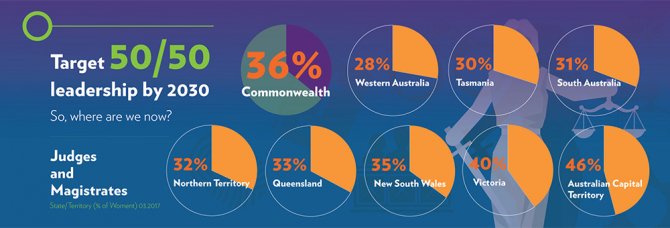 And that story is about how, and why, we find ourselves in this state. And why do the numbers persistently fall the way they do? Why are women across every sector, in every country, struggling for an equal share of leadership, power and authority? Not to mention an equal share of respect, resources, and self-autonomy.
And that story is about how, and why, we find ourselves in this state. And why do the numbers persistently fall the way they do? Why are women across every sector, in every country, struggling for an equal share of leadership, power and authority? Not to mention an equal share of respect, resources, and self-autonomy.
In various sectors and workplaces we have managed to shift the numbers. But we have not shifted the masculinised frameworks under which they continue to operate. Under which we all operate.
We have built scaffolding (albeit wobbly) to support greater inclusion of women in workplaces and at all levels of organisational leadership. But we have yet to change the main frame. The masculine leadership frame. Power is yet to be feminized.
Power is yet to be feminized.
When it comes to leadership, power and authority, we have not yet succeeded in taking the sex out of the stereotypes.




